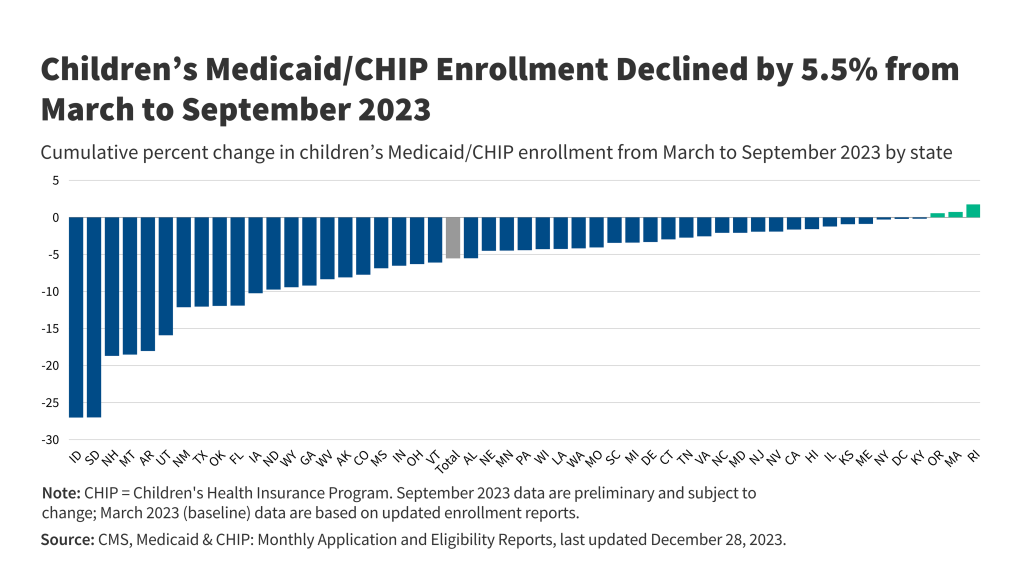[ad_1]
Kids’s Medicaid and Kids’s Well being Insurance coverage Program (CHIP) enrollment declined through 5.5%, or 2.3 million youngsters, from March 2023, prior to the unwinding started, to September 2023, in step with KFF’s latest analysis. Throughout all 50 states and DC, a minimum of 14,377,000 other people had been disenrolled from Medicaid between April 1 and January 9, 2024.
Medicaid eligibility ranges are upper for youngsters, elevating issues that they is also dropping protection and changing into uninsured in spite of closing eligible. Medicaid covers 8 in 10 youngsters residing in poverty and over part of Black, Hispanic, American Indian, and Alaska Local (AIAN) youngsters.
The lack of Medicaid may aggravate financial rigidity for plenty of households. Lately, as family bills stay top and maximum pandemic-era monetary reduction has ended, households with youngsters are experiencing greater monetary hardships and emerging poverty charges.
Kids have the absolute best professional poverty charges of any age staff. In 2022, the share of youngsters ages 0-18 residing in poverty used to be about 16%. Whilst the professional poverty measure remained solid between 2021 and 2022, the supplemental poverty charge for youngsters greater than doubled, from 5.2% in 2021 (a file low) to twelve.4% in 2022 most likely due partly to the expiration of expanded tax credit, together with the expanded Kid Tax Credit score. Supplemental poverty charges had been absolute best in 2022 for youngsters who establish as AIAN (25.9%), Hispanic (19.5%), or Black (17.8%).
Whilst youngsters’s poverty charges and Medicaid protection losses have greater, contemporary federal movements might assist households duvet bills and deal with protection one day, together with reports of a tentative bipartisan settlement to amplify the Kid Tax Credit score in addition to a 12-month steady protection requirement for youngsters in Medicaid and the Kids’s Well being Insurance coverage Program that began in 2024.

[ad_2]
Source link
